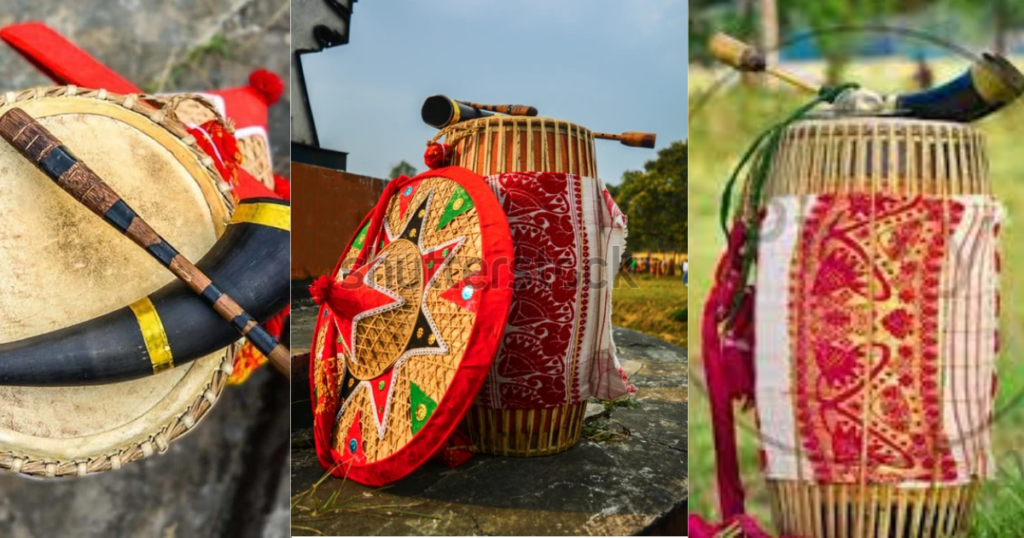Introduction to Magh Bihu 2025
Magh Bihu 2025 is one of the most awaited festivals in Assam, marking the end of the harvest season. Celebrated in the Assamese month of Magh (January), this festival is a vibrant blend of tradition, joy, and community spirit. Known as the festival of feasts, Magh Bihu is deeply rooted in agricultural practices and is a time for thanksgiving and celebration.
History and Significance of Magh Bihu
Magh Bihu, one of Assam’s most vibrant festivals, marks the end of the harvest season and the transition of the sun into the zodiac sign of Capricorn, aligning with Makar Sankranti. Celebrated in the Assamese month of Magh (January), this festival is a joyous expression of gratitude towards nature for its abundance and signifies prosperity, togetherness, and cultural pride.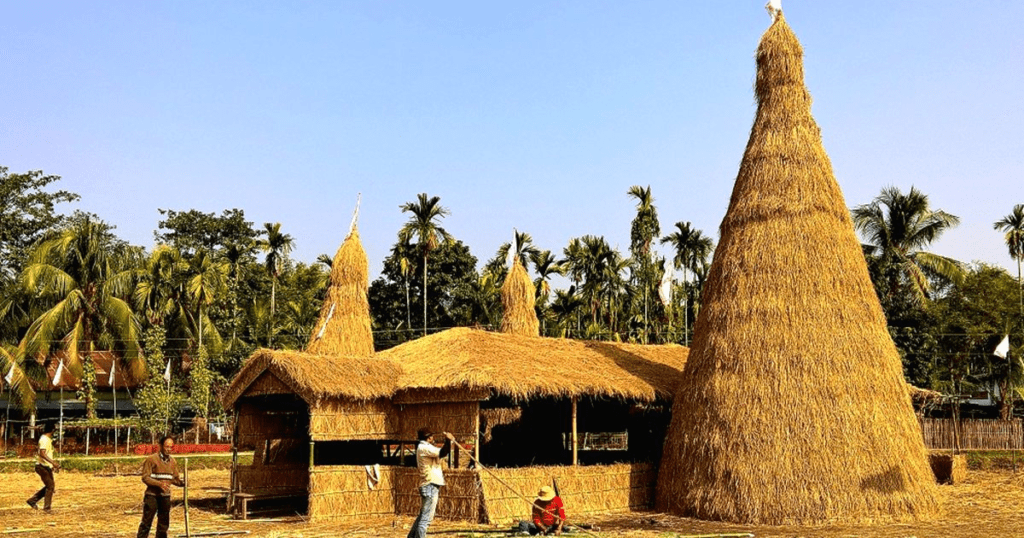
The origins of Magh Bihu are deeply rooted in ancient agrarian traditions. It was historically observed as a thanksgiving festival by farmers, honoring the earth and sun for a bountiful harvest. The festival has mythological connections too, with rituals believed to invoke blessings for a prosperous year ahead.
Magh Bihu is renowned for its community-oriented customs, such as the grand feasts of Uruka, the symbolic burning of the Meji (bonfire), and traditional sports like buffalo fights and egg fights. These customs celebrate the unity, hard work, and harmony of rural life.
In modern times, Magh Bihu retains its traditional essence while embracing contemporary elements, showcasing Assam’s rich cultural heritage. It is a festival that brings families, friends, and communities together, making it a cherished and significant event in Assam’s cultural calendar.
Traditions and Customs of Magh Bihu
1. Community Feasts
One of the most cherished traditions of Magh Bihu is the grand community feasts, particularly on the night of Uruka, the eve of the festival. This is a time when families, friends, and neighbors come together to celebrate the bountiful harvest through food and togetherness.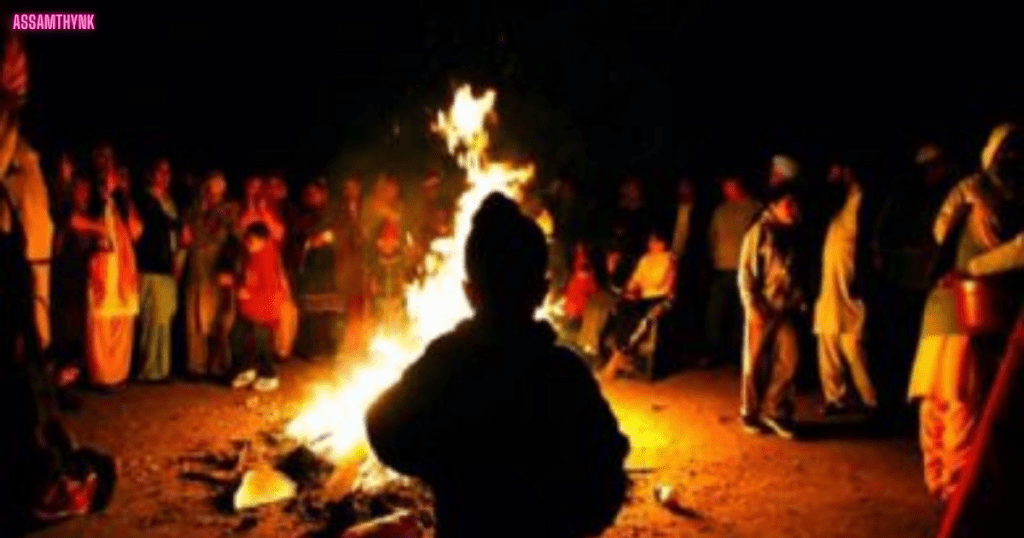
The feast is often prepared in Bhelaghars, temporary huts made of straw and bamboo. Men and women gather to cook traditional dishes using fresh, seasonal ingredients. Some popular items include til pitha (sesame rice cakes), narikol laru (coconut laddoo), and sunga saul (sticky rice cooked in bamboo).
The festive atmosphere is enhanced by songs, dances, and storytelling. People bond over shared meals, laughter, and warmth, reflecting the spirit of unity and gratitude. The community feast is not just about food but also about strengthening social ties and celebrating the cultural heritage of Assam.
2. Meji Burning
The burning of the Meji is one of the most important and sacred rituals of Magh Bihu, symbolizing gratitude and purification. On the morning of Magh Bihu, a towering bonfire, called the Meji, is lit after being carefully constructed from firewood, bamboo, and dried leaves. The Meji represents the connection between humans and nature and serves as an offering to the gods.
Before lighting the Meji, people gather to perform rituals and offer items such as pithas (rice cakes), betel nuts, and other traditional delicacies. These offerings are made to the fire as a gesture of thanks for a successful harvest.
The flames of the Meji are believed to purify the environment and bring prosperity for the coming year. As the Meji burns, people sing Bihu songs, dance, and rejoice, creating an atmosphere of unity and joy. The ritual emphasizes harmony, renewal, and hope.
3. Sports and Games
Sports and games are integral to the vibrant celebrations of Magh Bihu, adding a spirit of competition and camaraderie to the festival. Traditional games, deeply rooted in Assamese culture, are held across villages and towns, drawing large crowds of enthusiastic participants and spectators.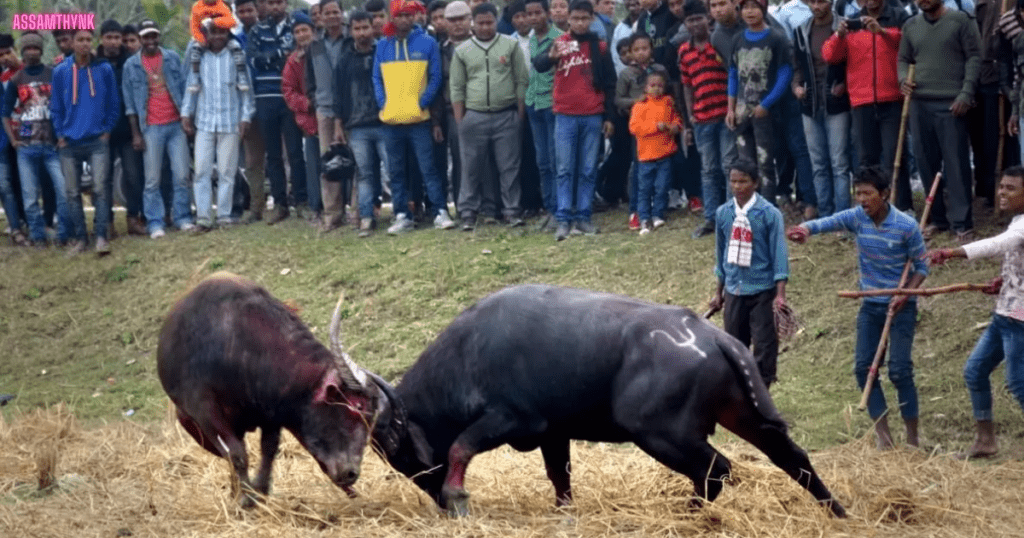
Buffalo fights are one of the most iconic events, symbolizing strength and valor. These competitions, though controversial in modern times, have been an age-old tradition during Magh Bihu. Egg fights and cock fights are also popular, showcasing playful rivalry and local customs.
Other activities include tug-of-war, kabaddi, and traditional wrestling, emphasizing teamwork and physical endurance. Youngsters participate in these games with zeal, while elders reminisce about their past experiences.
These sporting events during Magh Bihu not only provide entertainment but also strengthen community bonds, celebrate local traditions, and add an energetic charm to the festival’s joyous atmosphere.
Magh Bihu 2025: Dates and Festivities
Magh Bihu in 2025 will be celebrated on January 15th, starting with the grand Uruka Feast on January 14th. The festivities typically last for several days, with each day dedicated to unique rituals and customs.
Key Rituals of Magh Bihu
1. Uruka Night
Uruka, the night before Magh Bihu, is a highlight of the festival. It is a time for families and communities to come together and celebrate with a grand feast. People prepare traditional Assamese dishes like pitha, laru, and sunga saul (rice cooked in bamboo) in a communal setting. During Uruka, temporary huts called Bhelaghar are constructed, where people gather to cook, eat, and celebrate. The night is filled with songs, dances, and laughter, marking the beginning of the Magh Bihu festivities. It symbolizes togetherness, unity, and the joy of completing the harvest season.
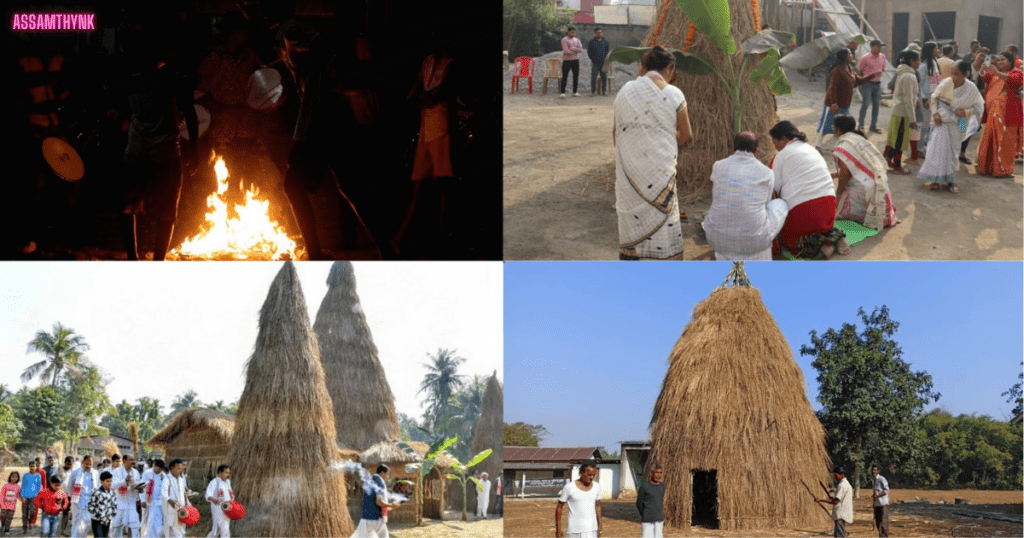
2. Prayer and Worship
Prayer and worship are central to the celebrations of Magh Bihu, particularly on the morning of the festival. Devotees perform rituals to honor the sun and agricultural deities, seeking blessings for prosperity and a good harvest. People take a holy dip in rivers or ponds, cleanse themselves, and wear new clothes as a symbol of renewal. The most significant ritual is the Meji burning, where offerings of food, fruits, and sweets are made to fire, while prayers are recited around the bonfire. This act signifies purification, thanksgiving, and a fresh start for the year ahead.
3. Sharing and Togetherness
One of the most important aspects of Magh Bihu is the emphasis on sharing and togetherness. The festival brings families, neighbors, and communities together to celebrate the end of the harvest season. People exchange homemade delicacies like pitha, laru, and doi-chira, which symbolize unity and goodwill. The tradition of visiting friends and relatives fosters a sense of belonging and strengthens social bonds. Whether through community feasts, gifting food, or simply spending time with loved ones, Magh Bihu highlights the importance of togetherness, making it a truly communal and heartwarming celebration.
The Feast of Uruka
The Feast of Uruka is the highlight of Magh Bihu celebrations, marking the eve before the main festival. On this night, communities gather to prepare a grand feast, sharing food and enjoying each other’s company. Traditional dishes like til pitha, narikol laru, and sunga saul (rice cooked in bamboo) are cooked and savored, often in specially built huts called Bhelaghar. The atmosphere is filled with joy, laughter, and song as people bond over the festive meal. Uruka is a celebration of togetherness, symbolizing the end of the harvest season and the beginning of new blessings.
Celebrations Across Assam
Magh Bihu celebrations vary across Assam:
- Rural Assam: Traditional practices like buffalo fights and community fishing are common.
- Urban Assam: Cities witness cultural programs, fairs, and exhibitions.
- Tribal Communities: Tribes like the Bodos and Mishings have unique customs, adding diversity to the festivities.
Bihu in Assam
Bihu is the most celebrated festival in Assam, marking the changing seasons and the agricultural cycle. There are three major Bihu festivals: Bohag Bihu (celebrated in April, marking the Assamese New Year), Magh Bihu (in January, celebrating the harvest), and Kati Bihu (in October, focused on agricultural rituals). Each Bihu is characterized by vibrant dances, traditional music, feasts, and rituals. Bohag Bihu is particularly renowned for its cultural performances like Bihu dance and Bihu songs, while Magh Bihu focuses on thanksgiving for the harvest. These festivals bring communities together and celebrate Assamese culture.
FAQs About Magh Bihu 2025
- What is Magh Bihu?
Magh Bihu is a harvest festival celebrated in Assam, marking the end of the harvest season. - When is Magh Bihu 2025?
Magh Bihu 2025 will be celebrated on January 15th, with the Uruka Feast on January 14th. - Why is the Meji burned?
The Meji is burned to honor the deities and thank them for a bountiful harvest. - What foods are associated with Magh Bihu?
Traditional dishes like pitha, laru, and doi-chira are prepared during Magh Bihu. - What is the significance of Uruka?
Uruka is a night of community feasting and joy, symbolizing togetherness and gratitude. - Are there any unique games during Magh Bihu?
Yes, traditional games like buffalo fights, cock fights, and egg fights are popular during Magh Bihu. - How is Magh Bihu different from Bohag Bihu?
While Magh Bihu marks the end of the harvest season, Bohag Bihu celebrates the Assamese New Year and the beginning of the agricultural cycle. - Can tourists participate in Magh Bihu celebrations?
Yes, tourists are welcome to join the festivities and experience Assamese culture. - What are Bhelaghars?
Bhelaghars are temporary huts built during Uruka night, where people gather for feasts and celebrations. - How has Magh Bihu evolved over the years?
Modern celebrations incorporate eco-friendly practices and cultural programs while preserving traditional customs.
Conclusion
Magh Bihu 2025 promises to be a spectacular celebration of Assamese culture, tradition, and community spirit. This harvest festival, with its rich history, vibrant rituals, and sumptuous feasts, is a testament to the deep connection between people and nature. Whether you are a local or a visitor, Magh Bihu offers a unique opportunity to immerse yourself in the warmth and hospitality of Assam.
